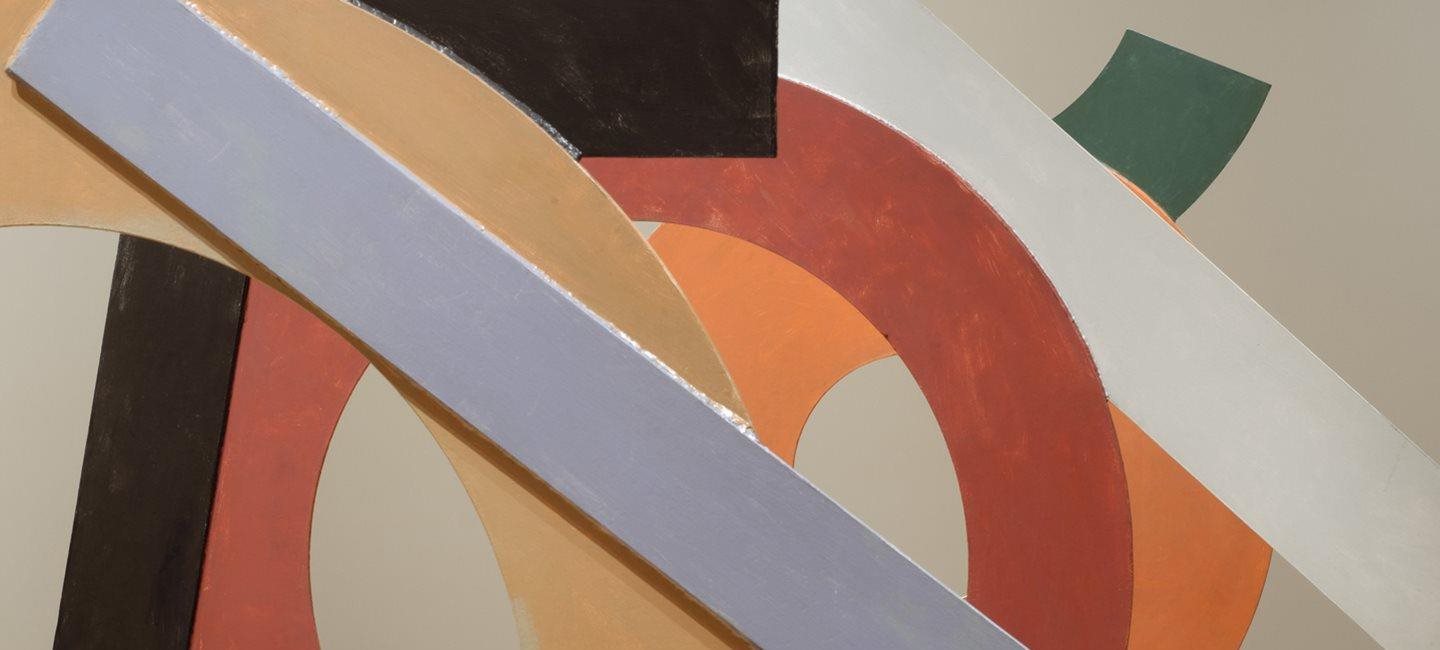
JULY 4–october 19, 2014
ABOUT THE EXHIBITION
David Smith (1906–1965) holds a singular place in the history of modern art. Known primarily as the sculptor most closely aligned with Abstract Expressionist painters like Jackson Pollock and Willem de Kooning, Smith produced a diverse body of work in a broad range of media. He famously remarked: “I belong with the painters.” Much to the consternation of critic Clement Greenberg, a usually fervent admirer of Smith’s work who advocated that each medium be distinguishable, Smith frequently painted his sculptures. His stated goal was to combine painting and sculpture in order to create a new medium that “beats either one.” The Circle Series (1961–63) is Smith’s ambitious and monumental attempt to bring this unity into being.
During the years Smith worked on the Circle Series, when color was playing an increasingly important role in his work, he paid greater attention to the arrangement of sculpture in the fields around his Adirondack home and studio. Painted in industrial hues that contrast with those found in nature, but constructed to stand in harmony with the landscape, Smith’s sculptures confront the viewers with a conflict: How are we to be modern, responsive to the materials and the technologies of our time, and yet also remain conscious of our respective locales and nature? Smith used the form of the circle to work through this conflict while forging a relationship between landscape, industry, and art.
BOLTON LANDING
In 1929, Smith purchased an eighty-six-acre farm in Bolton Landing, near Lake George in upstate New York. He moved there permanently in 1940. The property consisted of a house and barn to which he later added studios for painting and sculpture. But the fields were the property’s signature feature. In Italy in the summer of 1962, Smith created the twenty-seven sculptures of the Voltri Series and installed a dramatic group of them in an ancient Roman amphitheater. The Bolton Landing fields became his theater thereafter. The Circle Series was at the center of his new emphasis on arrangement. The installation of Circle I, Circle II, Circle III, and Circle V mirrors Smith’s placement of these four sculptures in his north field.
COLOR
In a 1964 interview with the poet and curator Frank O’Hara, David Smith was characteristically direct in his discussion of his chromatic preferences. “I don’t like pretty colors,” Smith said, “I like kind of raw color.” He lauded the acid greens and raspberries, the “gutty” colors, he had recently seen in a Josef Albers exhibition. Informed by the hues of industrialized modern life, Smith’s use of raw, inorganic colors in his later works heightens the perceptual experience of his sculptures. To make paintings like those installed here, Smith would lay objects down on blank canvas and spray enamel directly from the can onto the surface. When the objects were removed, white shapes were left floating among the colors. Smith’s emphasis on negative space and industrial technique challenged expectations of what a painting could be. In working toward what he termed “new unities” and moving beyond strict categories of media, Smith took sculpture and painting into expansive new terrains.
